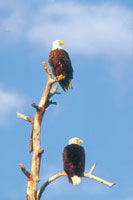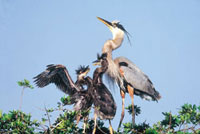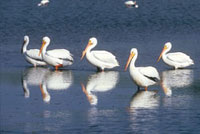First Look
Canon's New Flagship EOS-1 V
Canon's EOS-1 V is
an entirely new camera, dubbed as "the world's fastest"
due to its 10 fps ability. While it does include some EOS-3 features,
the technology has been upgraded since that model was designed. As well,
the EOS-1 V offers unique construction, extra versatility, and higher
performance level. |
|||
The camera boasts a magnesium
alloy top and front cover. This metal is extremely rigid and light, and
serves as an excellent electromechanical shield. (Power Booster PB-E2
also has a magnesium alloy cover.) The mirror box is made of die-cast
aluminum and the rest of the body is a hybrid: die-cast aluminum and glass-fiber
reinforced polycarbonate resin. The EOS-1 V is incredibly well sealed
against rain and dust at some 72 areas with silicone rubber covers, washers,
"boots," O-rings plus 10 coats of silicone over the body.
The lens mount perimeter features a water-resistant O-ring--like
the mounts of the new super-telephoto IS lenses--making the combination
especially useful in rainy climates. |
|||
With lenses of f/2.8
or wider maximum aperture, seven cross type sensors ensure focus on most
any type of pattern, appreciated by pros using some of the many "fast"
EF lenses of this type. In AI Servo focus, the EOS-1 V can track a subject
approaching at a speed of 30mph until it reaches a point 26.2' from
the camera--even when shooting at an incredible 9 fps. The AF system's
new algorithm uses more focusing data than previous models did, for "predictive
focusing that is unmatched by any other current AF SLR camera."
|
|||
Noteworthy Primary
EOS-1 V Features |





































